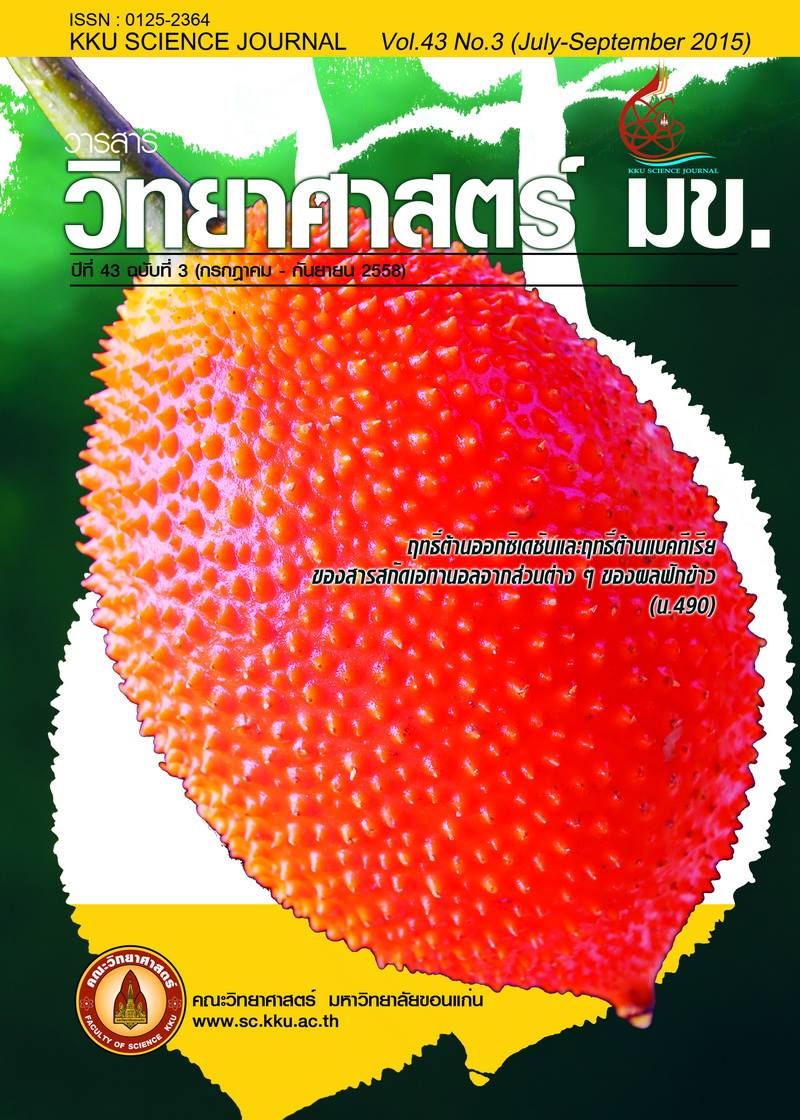Genetic Diversity Analysis of Stemona spp. by Sequence Related Amplified Polymorphism Technique
Main Article Content
Abstract
Stemona spp. are widely known in Thailand and other foreign countries. In Thailand there are about 10 species could be recognised. This research aimed to study the genetic diversity of Stemona spp. in a conserved plantation of Chiang Mai University. DNA fingerprints were constructed using the sequence related amplified polymorphism (SRAP) technique to identify the species of Stemona spp. Genomic DNA was extracted from the leaves of 160 samples. The DNA fingerprints were constructed by SRAP technique with 10 pairs of primers: M1E1, M1E2, M1E8, M2E10, M4E4, M4E8, M4E9, M5E5, M7E2 and M8E9. Two hundred and twenty
five bands were detected, 222 (98.66%) of which were polymorphic. Analysis of genetic diversity with Dice Similarity Coefficient method showed the values of similarity coefficient to be 0.923-0.998. Cluster analysis of all the Stemona spp. samples revealed that they could be grouped into five clusters i.e. S. kerrii Craib, S. tuberosa Lour., S. burkillii Prain., S. curtisii Hook.f. and unidentified species that having the leaves similar to those of S. tuberosa Lour. These results indicated that SRAP technique for DNA fingerprint is an effective tool for determining genetic diversity of Stemona spp.
Article Details

This work is licensed under a Creative Commons Attribution-NonCommercial-NoDerivatives 4.0 International License.


